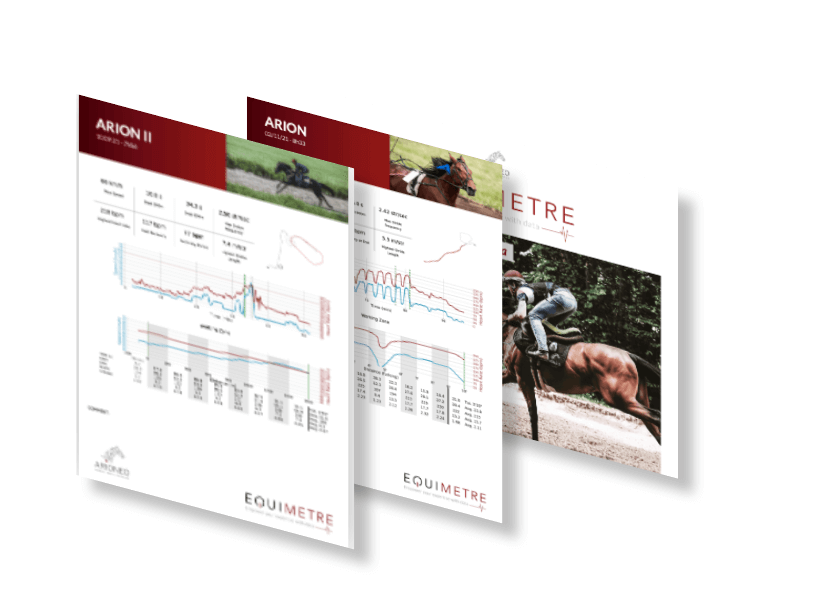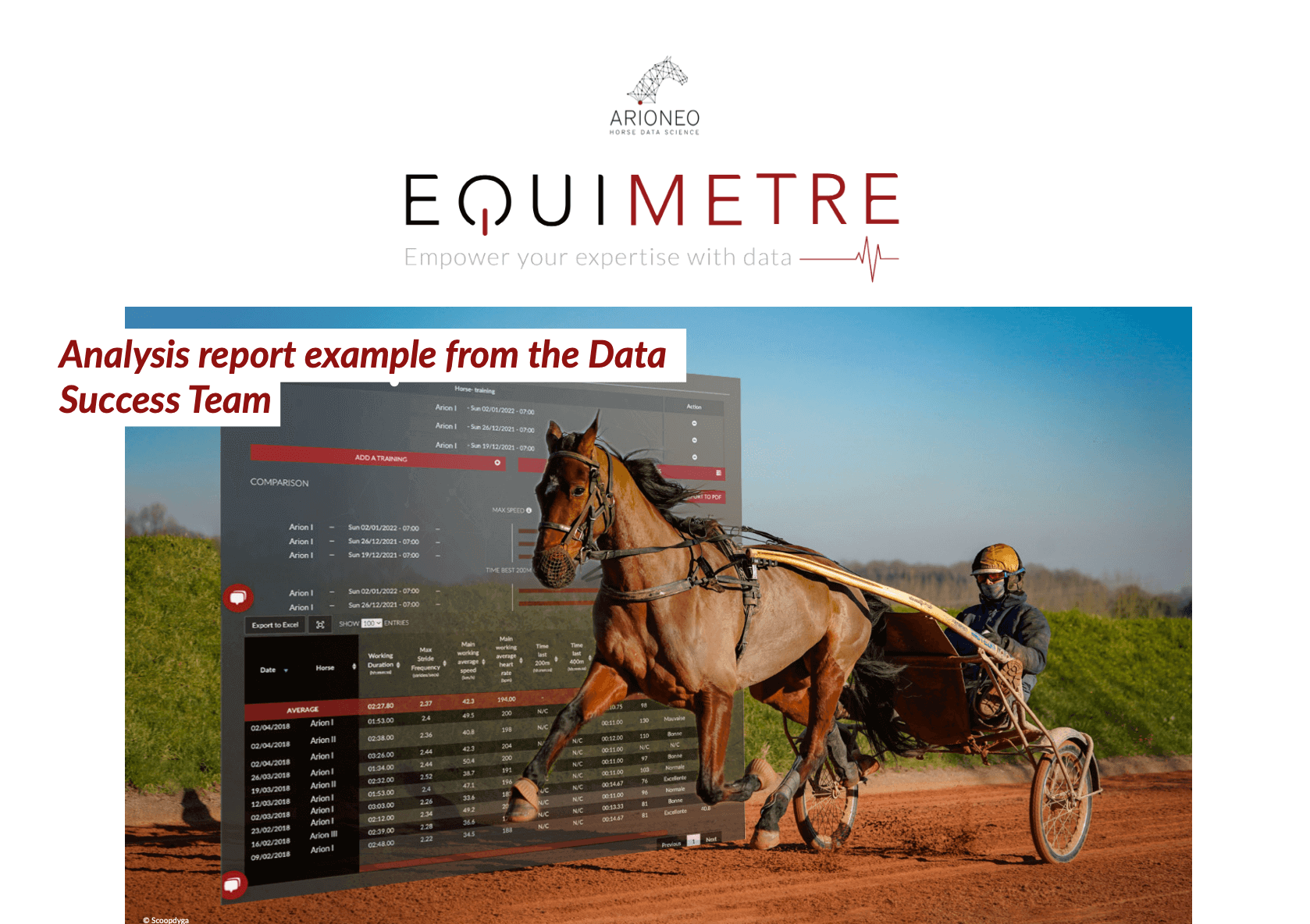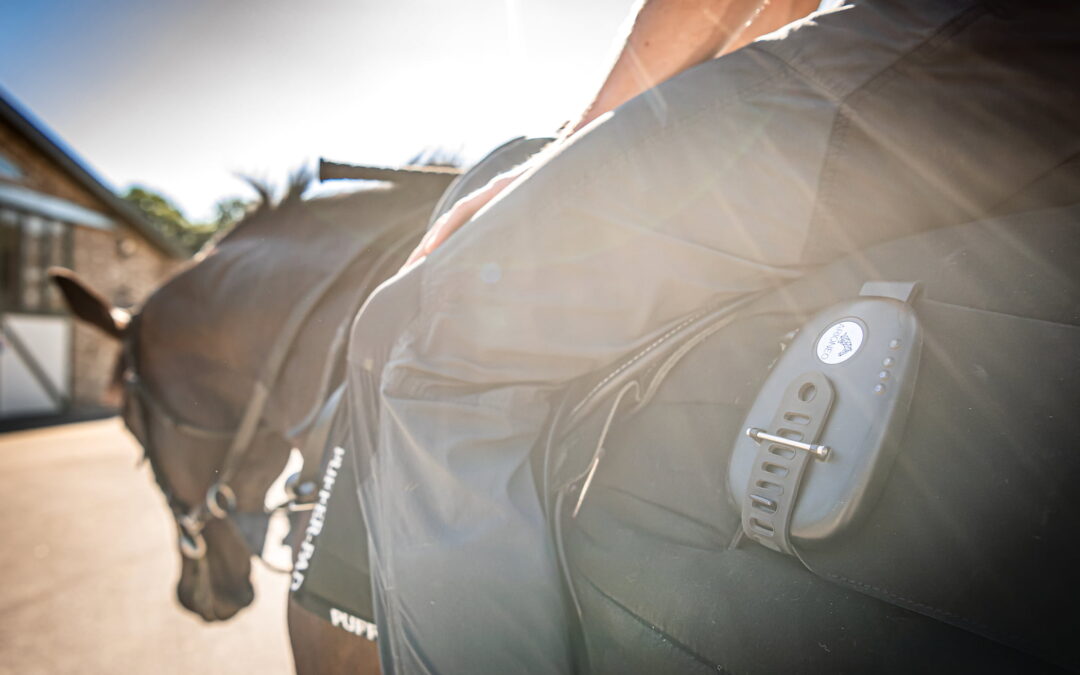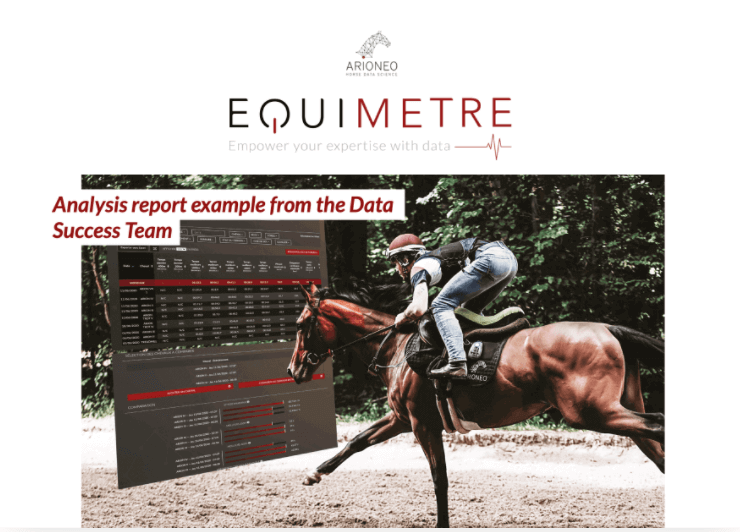Warning: number_format() expects parameter 1 to be float, string given in /var/www/wordpress/wp-includes/functions.php on line 425
In this post, we advise 6 ways to make Equimetre profitable, our technical solution for managing racehorse performance and health. The goal of these suggestions is to maximize the short and long-term benefits of this investment.
The racehorse is the ultimate equine athlete. His quantified training evaluation is progressively becoming a reference inside training stables. This helps you quantify your observations in order to have a comprehensive view of each horse.
How can these new equine technology be used to make their investment profitable? What approach should be taken to make the most of these tools?
The benefits of these instruments are numerous, both in terms of monitoring athletic performance and managing the horse’s health. Their use in the context of a training stable is now quite broad.
On the agenda:
1. Identify the optimal fitness level to win and maintain it throughout the season
2. Save time by detecting future performers (2 years / yearlings)
3. Anticipate underperformance and the risk of injury
4. Optimise the race strategy according to the horse’s profile
1. Identify the optimal fitness level to win and maintain it throughout the season
One of the main advantages of a connected sensor is the ability to quantify your horse’s fitness level at any given time. By collecting data on a regular basis, you may establish a baseline and enhance your observations with measurable parameters. As a result, you can discover the data associated with your horse’s peak fitness. Once collected, this data becomes a goal to achieve before the following race.
You may, for example, track one of your horses’ pre-race training. You will collect significant data: you will know his top speed and his capacity to maintain it, the level of effort experienced, how the horse reacts to the effort, his recovery parameters, and, lastly, his stride profile.
Data from the Equimetre platform
Once this data has been collected, and the race has passed, you have two options depending on the result:
- If the race went well, thanks to the data recorded, you will be able to know 100% if the horse is back in good conditions for his pre-race work for the next deadline.
- On the contrary, if the race did not go well, if the horse did not finish well, you will have markers to improve when preparing for the next race, in order to optimise the chances of success. For example, you can use the stride data collected to challenge the initial decision to have race the horse over a specific distance.
Thanks to Arioneo, we notices he’s [Skalleti] like a metronome. He always has the same stride length and recovery. He manages to give very similar training data. As the months and years pass, he remains the same Skalleti which gives us confidence to return racing, despite a few inactive months including a very much needed spelling period after Hong Kong. You can really see it in the data: we prepare the horse with great regularity, no quick work, just maintenance gallops which remain nevertheless quite thorough. And after three or four months of inactivity, he comes back and be THE Skalleti we know.
Jérome Reynier
Equimetre user since 2019
It is important to note that we are just addressing the horse’s physiological ability data here, and hence external aspects such as mental or environmental are not taken into account.
Analysing and comparing a horse’s current state of fitness to that which he had when he performed well in the race therefore allows you to form a more thorough opinion of his current level of fitness, and his ability to run well on the day.
2. Save time by detecting future performers (2 years / yearlings)
The dream of seeing a future group race winner in his stable is shared by many trainers. Training and building the confidence of a 2 year old is part of a long process and one must not skip steps. This is why young horses do a lot of hard work once the trainer know they are in excellent physical condition.
A standardised test, as mentioned above, makes it possible to measure their physiological aptitudes and speed skills. The data collected during this test will be used to create a baseline data from the horses’ training sessions in order to monitor their progress. These data also make it possible to highlight extraordinary performances characterised by non-standard physical and physiological capacities. The earlier performance measurements and monitoring are carried out, the sooner the horse’s potential will be defined and appropriate training can be set up.
2. Anticipate underperformance and the risk of injury
An injury may ruin a great season faster than anything else. It is critical for both trainers and horses to reduce the danger of injury as much as possible.
Using the measurements provided by a wearable technology, you may build reference points after collecting an initial database to assess if a horse is at a higher risk of injury at a specific moment.
For example, after monitoring a horse a few times, you will be able to identify his physiological data. Repeating the same warm-up exercise will teach you that a horse’s heart rate is for instance always around 125 BPM . If this horse’s cardio reaches 140 / 145 BPM during his warm-up without any external disturbing factor, you will have a first warning to look at the data more attentively before it becomes dangerous.
This allows you to adjust training to the individual needs of each horse and avoid injuries before they arise.
3. Optimise the race strategy according to the horse’s stride profile
Although a horse may be well-trained and fit, it is still necessary to enter him in a race that will allow him to reach his maximum potential.
The horse’s speed is the factor that determines the outcome of the race. According to tracking statistics, the last 200m are rarely the quickest. The horse that slows down the least is the one that will win. Only great horses can race at top speeds.
As a result, “normal” horses have limited top speed holding capacities. This is when the stride data comes in handy. The unique method by which each horse produces his stride dictates his speed, acceleration technique, and capacity to maintain pace. Identifying a horse’s locomotor profile enables you to back up your gut instincts with empirical data that informs the horse’s preferred distances.
These enhancements are mostly aimed towards boosting your horses’ performance. Thus, using the stride data to discover the theoretical locomotion profiles of your horses and their acceleration strategy is one of the greatest methods to make your Equimeter profitable.
This requires not only the horse’s pedigree, but also his trainer’s expertise. Equimetre data, on the other hand, can complement these observations. They do, in fact, give scientific backing for each action.
I like the concept and the scientific research behind EQUIMETRE. I wanted to see raw facts, to know the reason of why a decision is the best one. For example, I know that one of my fillies is a stayer because she falls within the stride length parameter of a stayer. We know that her stride length is at 7.6 meters and that her stride frequency is at 2.23 so she will be suitable for probably 3200 meters, and she can sustain it. From the beginning I said that I was going to give EQUIMETRE 12 months and whatever it took, I was going to take it quite seriously. Whatever information or data that needed to be collected, I would, and if I didn’t get a result in 12 months, I would stop it. I thought 12 months was reasonable with the horses’ preparation, and it would give everyone a fair go. And I had some great results. For example, with a young horse called I Am War. He had six starts and four wins!
Trevor J Andrews
Australian trainer
4. Develop the potential of each horse
In theory, every horse should be able to win a race if the race matches precisely his abilities. Equimetre will assist you in objectively assessing each of your horses’ abilities and so fully using their capabilities.
Data collection allows for the creation of a long-term image of the horse. From year to year, you’ll know which data is important for each horse and which is related with a good or poor race outcome. This information is consequently crucial in supporting your sentiments and assisting you in choosing the appropriate race on the right track for the right horse.
5. Offer a new and differentiating service to your clients
Data may be a powerful marketing tool. Owners may welcome a new method of contact as they can be frustrated by a lack of information and communication. Sharing specific information and training data, for example, can increase loyalty, especially if your owners are not in the same country or continent as their horse. This fosters the sense of connection and belonging while also making communication simpler.
The owners are not necessarily near the training centre, they can’t necessarily see their horses every week and with this they can use the data from the sensor, everything is sent to their email address and they can follow the work of their horse. They can also ask questions, it involves them totally in the training, they are part of the team.
Erwan Grall
French trainer and Equimetre user since 2020.
Furthermore, the data translates your experience and knowledge in terms of engagement, work, and season planning. This enhances your offer and might help you stand out from the crowd of trainers.
As a result, this new service might be charged to the pension fees. Many owners contact us in order to get in touch with Equimetre trainers.
Of course, you retain control over the information you choose to share or not, and this allows you to keep a new form of contact with your owners in order to continue the client relationships.
Download one of our resources example !


Conclusion
To end, it seems appropriate to remember that horses will always make us lie. We enjoy our sport since they have so many surprises in store for us!
The data gathered are useful indications, but they cannot stand on their own. Horses are sensitive creatures, and their behavior and emotions cannot be quantified. Data should be regarded as a complement rather than an absolute science. Data does not produce good horses, but it may assist in running the appropriate race at the right moment!
Given the importance of data in other professional sports, there is no question that it will enter the horse racing industry. Arioneo, a pioneer in this sector, enables the collection of heart rate, speed, and locomotion data.
Key words: Equimetre, performance, testimonials, profitability




